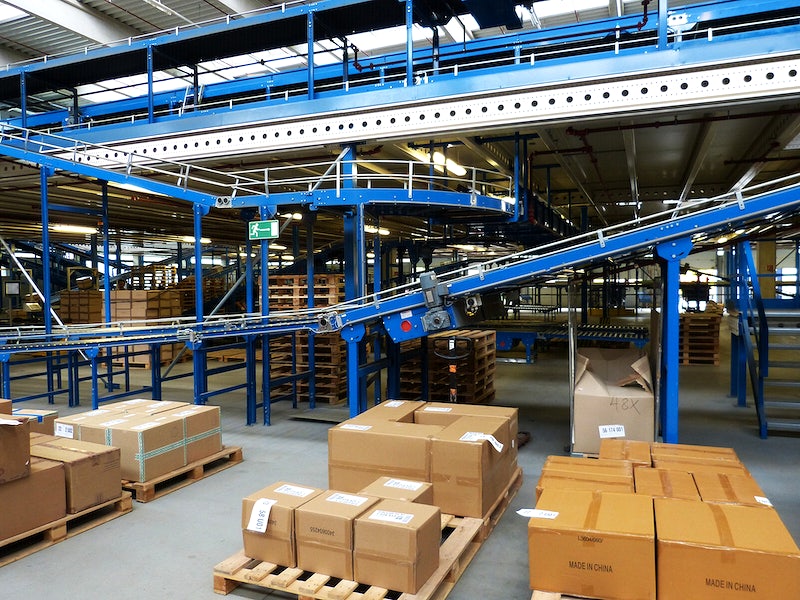The tasks associated with the delivery of raw materials are handled by inbound logistics or supply logistics to guarantee their availability throughout the production process. Given that it is a subject that every businessperson should be knowledgeable about, it is a crucial logistics function in the supply chain. We will address the following topics in this article:
- Inbound logistics definition and significance.
- Duties of inbound logistics.
- Identifying traits of effective incoming logistics.
- Components of the inbound logistics.
- Advantages of correctly applying this form of logistics.
- Strategies for efficient inbound logistics that you can use in your business.
We also remind you that you can leave us your questions or contributions concerning the entry procedures in the comments area if this information is helpful to you and other entrepreneurs who require it.
What exactly are inbound logistics?
Supply logistics, which encompasses all tasks involved in receiving goods, is in charge of making sure that raw materials are affordable and readily available in accordance with the company’s production needs.
Inbound logistics functions
Supply logistics’ primary functions are:
Relationship with suppliers: To establish the terms of raw material deliveries, suppliers are bargained with in a way that benefits both parties.
Stock planning: Stock planning is the process of choosing the right amount of inventory to keep on hand given production demands and consumer demand. It also involves deciding when to place a new order to maintain product traceability.
Inventory control: Managing storage procedures to reduce time, resources, and expenditures.
Importance of inbound logistics
The supply logistics of a company is important because:
- It handles the products’ receipt in an appropriate manner.
- The forecasting of demand is also improved.
- Additionally, it makes it easier to choose a model from the inventory.
- Allows for performance analysis.
- Manage the supply flow effectively.
- The traceability system is also defined.
- Lastly, communicate information instantly.
Elements of inbound logistics
These are the fundamental elements of supply logistics:
Supplier: Companies in charge of supplying raw materials are known as suppliers.
Warehouses: Areas used to store sufficient quantities of goods.
Transport: They are in charge of moving the goods from the warehouse to the relevant stage of the production process.
Inbound logistics characteristics
Here are the aspects that characterize supply logistics:
- Pick vendors who provide better supply conditions, better raw material quality, and more affordable costs.
- Makes sure delivery deadlines are met.
- Adequately handles warehouse control and inventory management to maximize the use of resources.
- Takes into account the demands and wants of both the company’s primary market and its area of production.
Inbound Logistics Benefits
Efficient supply logistics provides three main benefits to companies:
- Processes are carried out according to schedule, thanks to the timely availability of raw materials.
- Cost savings through supplier negotiations.
- The company’s productivity and profitability will rise as a result of good supply chain operation collaboration.
Inbound Logistics Strategies
We present some of the most effective strategies to improve the performance of supply logistics in companies:
- Vertical integration: In this situation, a backward vertical integration method would be used. This technique entails purchasing the primary raw material source in order to have more control over supply.
- Outsourcing: Delegating the duties of incoming logistics to a professional outside the firm is known as outsourcing.
Examples of Inbound Logistics Strategies
The Spanish clothing retailer Zara is one of the organizations that best demonstrates the backward vertical integration strategy. Zara was in charge of purchasing from its primary fabric supplier in order to have better supply control and to improve the performance of the manufacturing.
How to achieve adequate inbound logistics?
Here are some tips to improve your company’s supply logistics:
- The first step is to improve connections with suppliers.
- The second step is to evaluate market demands in order to develop logistical strategies.
- Structure and organize the warehouse’s spaces after that.
- Then it defines a stock area for items with a greater turnover rate.
- It’s crucial that you make sure the goods are stored at the warehouse for the least amount of time feasible.
- Finally, put controls in place to prevent mistakes.
Now, we can conclude that:
- Conducting operations connected to the supply of raw materials constitutes inbound logistics.
- The major duties of supply logistics include relationship with suppliers, stock planning, and inventory monitoring.
- Selective, effective, efficient, and analytical skills are necessary for excellent incoming logistics.
- In order to implement inbound logistics, suppliers, warehouses, and transportation are essential components.
It’s time to put everything you’ve learned in this article into practice to enhance your company’s inbound logistics and make it easier for production goals to be met, which will boost output and profitability.




